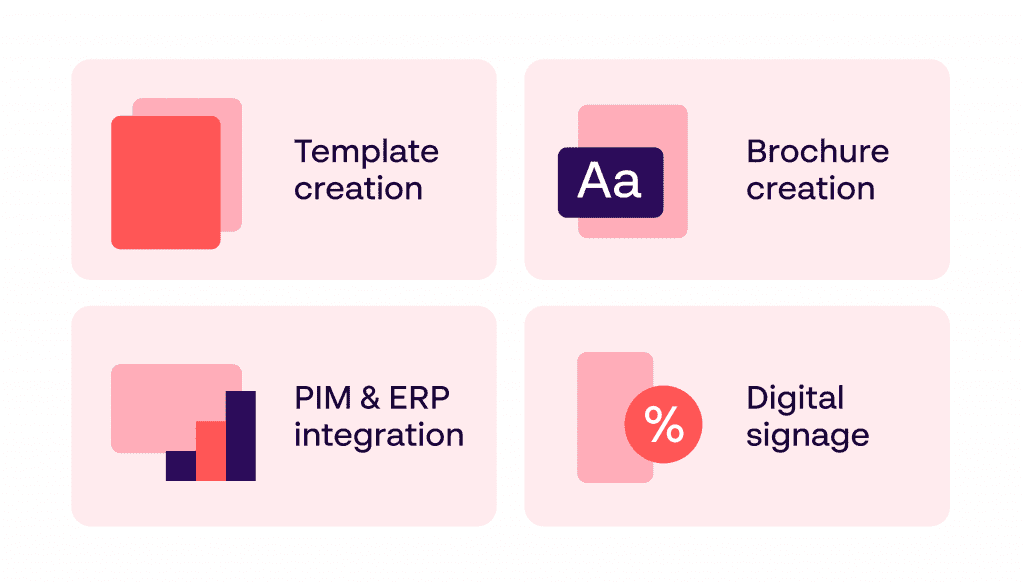From online stores and social marketplaces to virtual shopping experiences and more, the number of retail marketing avenues to monopolise on has exploded, and there are more opportunities than ever for retail marketers to reach potential customers.
In today’s retail marketing landscape, pace, demand and scope have made setting a single set of guidelines and enforcing them globally very difficult to execute. In this article, we’ll explore the key elements of brand governance in retail, and where brand strategies should be focused on in the near future.
What does brand governance look like in 2021?
Applying more flexibility to brand governance does not mean going off-brand. While it’s necessary to adapt your guidelines for different platforms, sub-brands and territories, an underlying thread of consistency is still absolutely vital.
Brand trust and authenticity are delivered through consistency. When consumers become used to receiving your messaging, products and services in a certain way, you begin building a relationship. Should this messaging or brand be delivered differently, and without good reason, it could damage the way they perceive you.
Research shows that a brand has a very short window to make a first impression, and it takes 5-7 impressions to start creating brand awareness.

To monitor every piece of marketing material or campaign asset across the world to make sure this first impression is right the first time, every time is a nearly impossible task. But the demands that have been placed on teams during the pandemic has meant that consistency for consumers has never been so important.
Where should marketers focus their attention?
Brand guidelines
Sure, you’ve already got a set of brand guidelines. But when was the last time you really looked at them? Since they were first created, has your business made any big decisions that could now make them redundant?
Could company decisions have impacted your brand guidelines?
- Has it made any major changes?
- Started rolling out new seasonal marketing?
- Realigned its core values?
- Launched new products?
- Updated its approach to customer service?
- Introduced new sub-brands or initiatives?
- Opened shop in new locations?
If the answer is yes to any of these, then your guidelines are probably in need of an update.
Your teams may already be crystal clear on how your brand presents itself, but what about your company as a whole, including teams in other markets and departments? To achieve global brand consistency it’s vital that everyone in your company has access to up-to-date and relevant brand guidelines.
The results of outdated brand guidelines or a lack of access to them, will quickly lead to inconsistencies in your product information, pricing and communications. Muddled messaging, unfamiliar looking product packaging and major price differences will leave customers feeling confused and your brand appearing unreliable.
Pricing
Brand governance and price positioning are more closely aligned than you might think. While governance strengthens brand consistency, price positioning strengthens the perceived value of your product. When you have multiple brands and products going to market across the globe, your pricing needs to align with the perceived value in each location. The implications of getting this wrong can undo all the hard work that has gone into your brand marketing.
Any good brand activation management tool will have a PIM and ERP integration feature that helps your teams to centralise product information including descriptions and prices, and allow you to import this data into your marketing (with all content correct) without needing any manual input.
Streamlined product data
Product data is all the information about a product that can be read, measured and structured into a usable format. It can do some wonderful things for retail marketers.
Organised product data can…
✅ Help you create competitive pricing online
✅ Compile product metadata
✅ Give sales teams relevant information
✅ Improve commercial decision-making
The key to getting the best use of your data relies on your ability to organise what’s relevant to specific teams and make it easily accessible from one location. Again, most good Brand Activation Management portals will help you centralise this easily
In-store challenges
Retail marketing is always changing to adapt to new trends and consumer demands. But the effects of the COVID-19 pandemic have caused monumental shifts in the way we shop in-store.
One of the top strategies for high street retailers has been to merge their online and in-store shopping experiences. More consumers now expect a seamless, hyper-personalised experience whenever they shop, and new technology has made this possible with app-based loyalty schemes, click and collect, personalised recommendations and more.
Effective brand governance is vital in implementing a seamless connection between these online and offline worlds. Without it, customers will be faced with misalignment between their experience shopping with a brand online and in-store.
Online challenges
Although the events of 2020 saw more consumers than ever before adopting online shopping as the norm, this hasn’t come without its challenges.
More online shopping platforms, along with competition from e-commerce giants like Amazon, mean that traditional in-store retailers have had to go above and beyond to meet the high expectations of consumers in the post-pandemic retail landscape.
Brand governance has played a vital role in making this possible. The core values of your brand are what attract your customers to your stores in the first place. Rolling out your brand’s messaging across multiple platforms and letting consumers see consistent, instantly recognisable traits both online and offline gives traditional retailers a physical, personal presence that giants such as Amazon have yet to establish.
Optimising approvals processes
Once a brand has solid governance and consistent alignment, teams need to be able to react fast to put it into practice. However, rushing to get a product to market on time is likely to increase the chances of error.
Having a clear approvals process where all changes can be monitored by key stakeholders not only makes life easier for your teams, but also means that you can react to demands, implement promotions and launch new products with speed and confidence. The key to a successful approvals process is ensuring it’s digitised where possible.
Which features to look out for when choosing a brand activation management tool

Template creation
If you have multiple teams producing retail assets, then templates are a failsafe way to ensure that everything stays on-brand, culturally relevant and consistent with specific campaigns.
Brochure creation
Never underestimate the power of print. With a creation suite built for producing both digital and printed assets, you can roll out a range of materials all with the correct branding, product names, features and prices. Bonus points for a localisation feature that can make your marketing tailored to local territories.
PIM & ERP system integration
As noted earlier in this article, keeping thousands of product variations consistent is much easier when you have up-to-the-minute product data at your disposal. With the right tool, you can use PIM & ERP integration to import information such as top-line USPs, and update packaging and cost information.
Digital signage
When the pressure is on to roll out new assets in your stores, digital signage is a great way to get your messaging out there, and fast. A tool with capabilities to upload assets to in-store screens directly from one system will help cut to-market turnaround times even further.
What’s next for brand governance in retail?
The world is moving faster every day. Teams are producing more content than ever. Hitting targets rests on the shoulders of central marketing teams. It’s integral to increase speed to market without compromising brand governance and consistency. But with disconnected teams across the globe, multiple agencies involved and disparate budgets, bringing powerful production tools into the mix will be a transformative move for retail marketers everywhere. It won’t be overnight, but when technology is embraced, workflows are re-imagined, productivity is increased and teams can deliver more on-brand campaigns than ever before.
BAM makes brand governance possible
We hope this has given you some new and helpful insights into establishing strong brand governance, and how a Brand Activation Management (BAM) tool can revolutionise your retail marketing processes. The challenges faced by retailers are growing, and as the landscape shifts on a daily basis teams should make their production process digitised, streamlined and future-proofed.Learn more about the BAM by Papirfly™ solution for retail brands and marketers.
